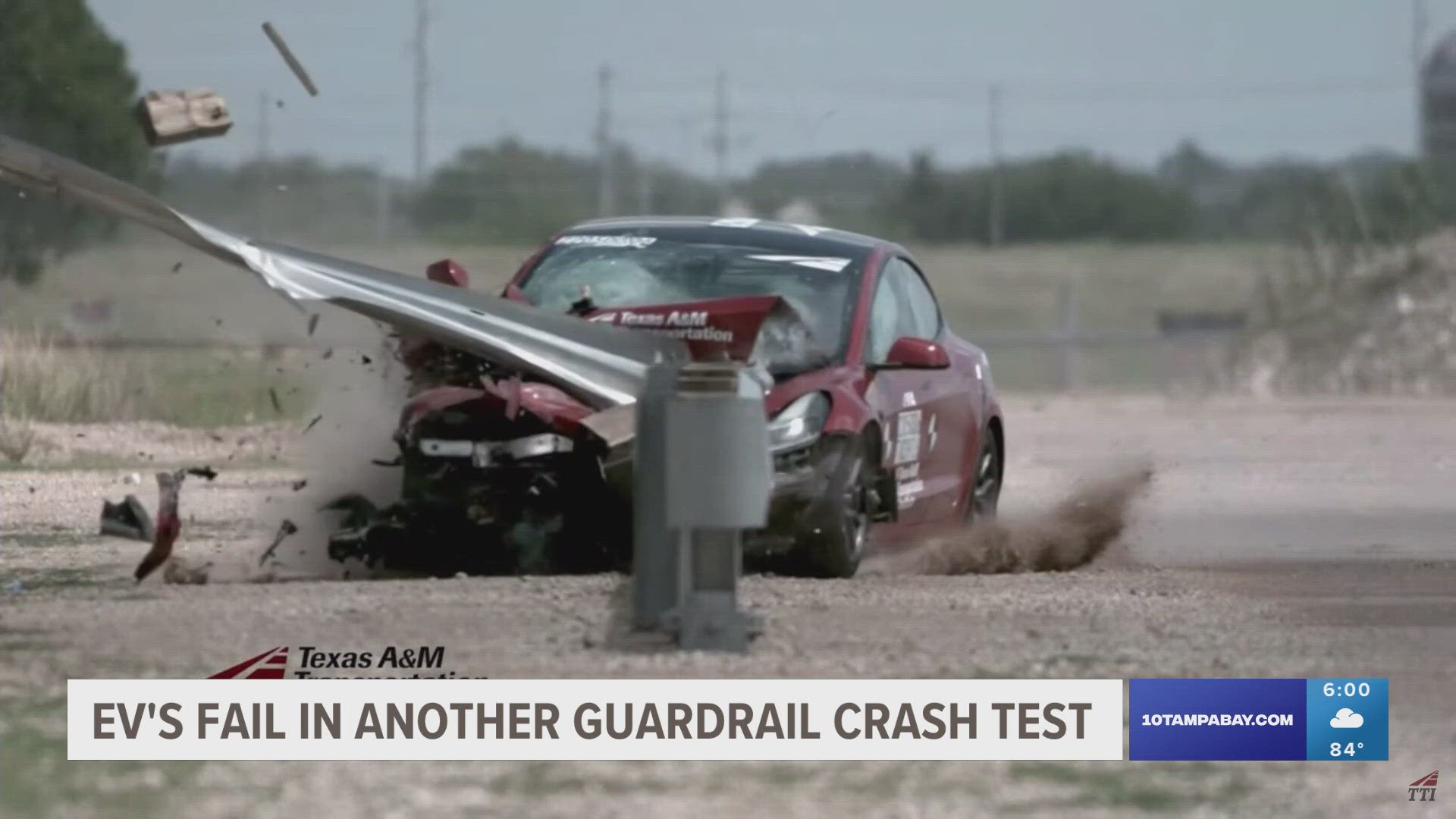ORLANDO, Fla. — “You're seeing the car make contact with the rail. The rail lifts up and deforms backward and it does eventually rupture,” James Kovar, an assistant research scientist at the Texas A&M Transportation Institute, said.
Kovar released the video for the very first time at the Transportation Research Board Roadside Safety Conference in Orlando this week.
That’s where 10 Investigates spoke exclusively with Kovar about the testing.
“The electric vehicle penetrated through the guardrail system and ruptured the rail," he said.
Kovar says going into the test, researchers knew of the previous tests from the University of Nebraska that showed a Rivian and Tesla failing when it hit a guardrail.
“We tested a system that has been viewed as a more robust system compared to what was previously tested with the hopes of improving the infrastructure on our roadways,” Kovar explained.
When we asked him how this test compared to that of a gas-powered vehicle, Kovar replied, “This system has been tested before according to mash standards and it worked successfully. When tested with an EV, the electric vehicle was able to penetrate through the rail.”
He says these tests are step one to improving infrastructure on our roadways. He says step two is mitigating any concern.
“This is not a cause for panic. The Vehicle fleet changes over time, and so does our roadside safety hardware,” Kovar said.

